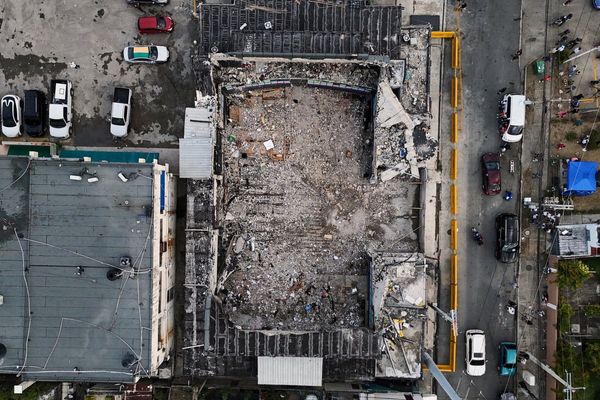
By the end of the year, the Delhi Metro will for the first time enter urban villages in Najafgarh. The nearly 5km-long section, which will connect the Dwarka Metro station on the Blue Line with Dhansa Bus Stand in Najafgarh, will come as a relief to thousands of commuters who currently have to travel at least 10km to reach the nearest Metro line.
Hindustan Times took a first look of the upcoming Grey Line’s Dwarka station — the first of the four on the corridor — which will now become an interchange facility, and ease access to the outer Delhi neighbourhood. Metro officials said work on the line is likely to be completed by September, and the section will be thrown open for public by the end of the year.
The Grey Line will have four stations — Dwarka, Nangli, Najafgarh and Dhansa Bus Stop.
The existing Dwarka station will be connected to the new station via an 80 metre passage connecting the old station on the Blue Line (between Dwarka Sector 21 and Noida Electronic City/Vaishali) to the new line. An additional parking facility will also be provided outside the station, adhering to the multi-modal integration (MMI) model, to accommodate the increased traffic in the area.
Apart from making an entry into the rural pockets, the Grey Line’s Najafgarh station will be the first train depot in the network to have both standard and broad gauges. Since the section, which is created on a standard gauge, will connect with the Blue Line, which runs on a broad gauge, the depot will both services.
The standard gauge, which has narrow track width compared to broad gauge, is considered a more advanced choice because it allows a low turning radius of trains and allows easy availability and higher quality of coaches.
“The Najafgarh Station is where the section’s depot will be. It will be the first depot in the network to have both broad and standard gauges,” a senior Metro official privy to construction work said.
The roof of the new Dwarka station is also fitted with solar panels equipped to produce nearly 180 kilo watts of solar energy.
Metro officials in charge of the section said the biggest challenge that the engineers faced while readying this section was construction over the Najafgarh drain. A detailed hydrological study had to be conducted for the zone, to assess the flooding risks involved in construction.
Another challenge Metro officials faced was not interrupting operations on the existing line while constructing the new station. While the high footfall on the Blue Line made constructions difficult, teams found a solution by connecting the two stations from a concourse area, instead of platform-to-platform.
“The new station was constructed separately and later connected through an 80m bridge from the concourse area. Earlier, we had thought of connecting the two stations from the platforms itself by a 120m bridge, but that would have caused inconvenience,” the Metro official said.
First Published: Jun 03, 2019 05:29 IST







